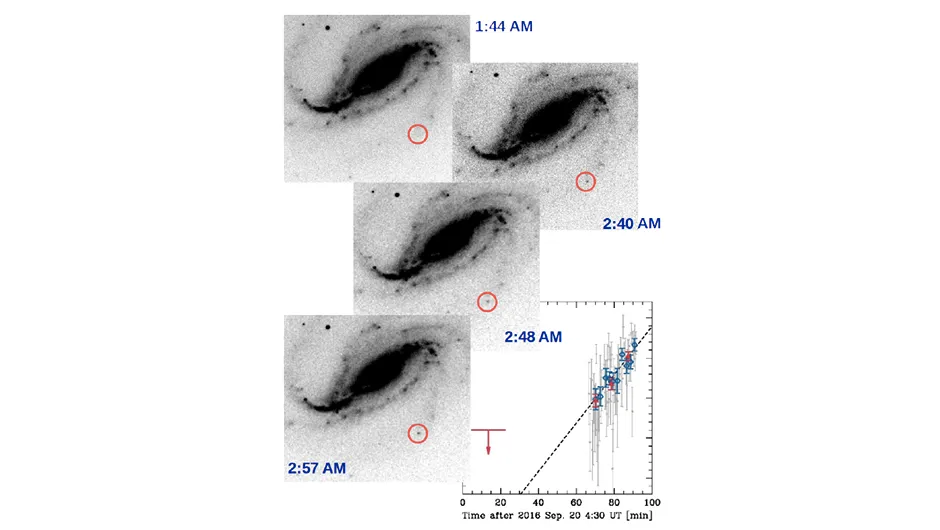An amateur astronomer from Argentina, Víctor Buso, has made history after his lucky snapshot of a galaxy was found to contain the first burst of light from a supernova.
The find is a boon to astronomers who have been searching for such an event for decades, and whose follow-up observations have recently been published.
Buso made his serendipitous discovery when he was testing a new camera for his 16-inch telescope by taking images of the spiral galaxy NGC-613.
As he examined the images, he noticed a faint point of light on the tip of one of the spiral arms that was quickly building in brightness and hadn’t been visible in his first images and Buso realised he had chanced upon a supernova.
The probability of his find has been estimated to be as low as one in 100 million.
Buso quickly brought it to the attention of professional astronomers, who followed up the event with telescopes around the world.
“Observations of stars in the first moments they begin exploding provide information that cannot be directly obtained in any other way,” says Alex Fillipenko from the University of California, Berkeley, who followed up the discovery with observations at the Lick and Keck observatories.

These newly published follow up observations revealed that the find was a Type IIb supernova, which are created by the explosion of a massive star which has lost most of its outer hydrogen layer.
It’s thought that the original star was initially around 20 times the mass of the Sun, but most of this has been stripped away, probably by a companion star, until there was only around five solar masses at the time it went supernova.
“Professional astronomers have long been searching for such an event. Buso’s data are exceptional,” says Fillipenko.
“This is an outstanding example of a partnership between amateur and professional astronomers.”
The findings were published in A surge of light at the birth of a supernova.
